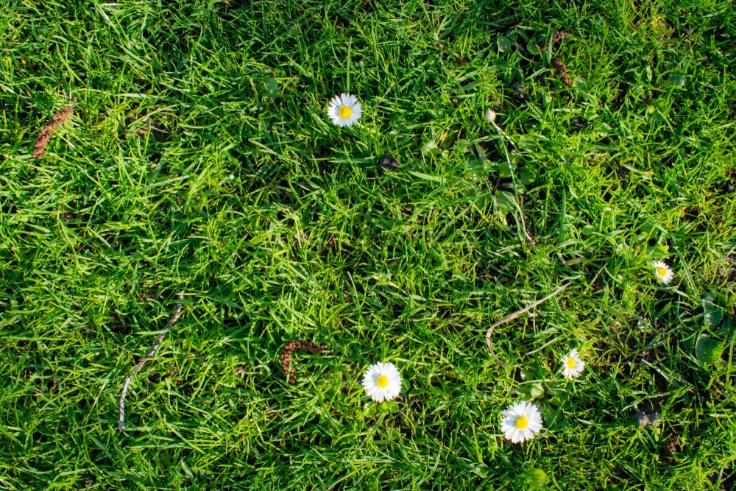Yard work is easily the most back-breaking, labor-intensive chore, so if you had the opportunity to virtually eliminate a sizeable proportion of your yard work responsibilities, you’d take it — right? What if we told you that artificial grass is that opportunity? If you’re like most homeowners, you’d back out of that deal fast.
Fake grass isn’t all that popular, but given its noteworthy advantages — low maintenance, low operational cost — why isn’t it more popular? We evaluate the pros and cons of fake grass and real grass below.
Pros and Cons of Artificial Turf
Artificial turf was first developed in the 1960s to help sports fields manage lawn maintenance, especially in indoor stadiums that cannot provide the nutrients that real grass requires. However, these days, more and more residential spaces are adopting artificial grass thanks to its various advantages. A number of different fibers make up artificial turf, largely depending on the brand and quality, but almost all turf offers identical benefits and downsides:
Pros:
- Low maintenance. This is the primary advantage of a fake lawn: no watering, no mowing, no fertilizing, no aerating, no seeding, etc. You might need to repair or replace patches of your lawn every few years, but that’s the most maintenance a fake lawn requires.
- Long life expectancy. Again, depending on the brand and quality you acquire, fake lawns can last anywhere from 10 to 25 years.
- Sustainability. Especially in parts of the country where grass doesn’t easily grow, artificial turf can be a sustainable option because it doesn’t waste valuable resources like water.
Cons:
- High initial cost. Because you don’t pay anything for years upon years afterward, artificial lawn purveyors charge massive amounts up-front. You can expect to pay between $5 and $20 per square foot — compared to between 14 and 60 cents for professionally laid sod.
- Hot. Artificial grass isn’t installed directly into the soil; it is basically an outdoor carpet. While sun shining on a real lawn causes moisture in the soil to evaporate, cooling the air, a hot day only makes fake grass hotter, causing it to become unusable for recreation.
- Not realistic. Admittedly, artificial turf has progressed by leaps and bounds in recent years, so high-quality fake grass does look better than ever. Still, it isn’t difficult to tell fake grass from real grass, either from eyesight or by feel, and that lack of realism is off-putting to many.
Pros and Cons of Real Grass

Meanwhile, grass has been a staple of landscaping for centuries, first appearing as a sign of significant wealth and eventually becoming a must-have for middle-class homeowners. There are hundreds of varieties of turf to choose from, but most of them offer similar advantages and disadvantages to the following:
Pros:
- Environmentally helpful. While grass does demand much energy use in some environments, it does have a positive impact on most ecosystems. Urban areas are heavily hardscaped, and grass provides water with a safe place to sink into the soil. Lawns also take in much CO2 and produce oxygen in return, purifying the air for humans and animals like.
- Emotional value. While many people don’t consider their lawns to be emotionally valuable, the truth is that a healthy, green lawn is a status symbol in America. It shows that not only are you successful enough to own a property, but you are mature and responsible enough to care for it. A lawn can be a major source of pride, which keeps you committed to caring for your home and life.
Cons:
- Extensive maintenance. We would be remiss if we neglected to mention that real grass requires real effort. However, you don’t have to care for your lawn alone or uninformed. Trugreen.com lawn care services can assume any or all of your lawn care responsibilities, from weed control to biannual fertilizing.
- Resource hungry. While lawns don’t take much money to install, they will continue to require money as well as time and energy to stay healthy. There are ways to reduce the resources consumed by a lawn, like choosing the right type of grass and committing to the right type of care, but even so, your lawn won’t be free.
While artificial grass is growing in popularity, it might not be the right choice for you, your home or your family. You should research more about fake grass and real grass to ensure you are informed and agreeable to whatever type of lawn you choose.
